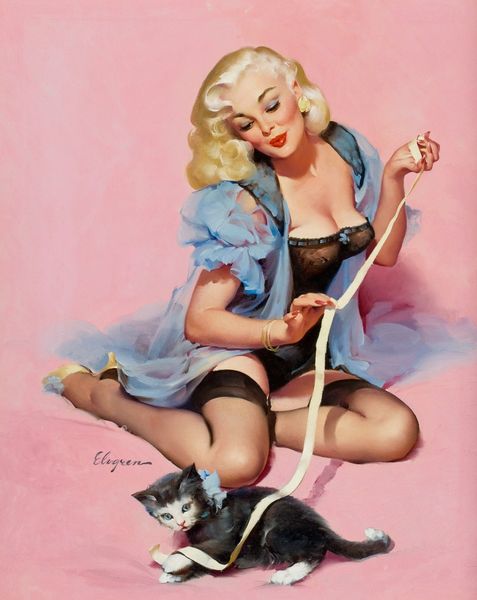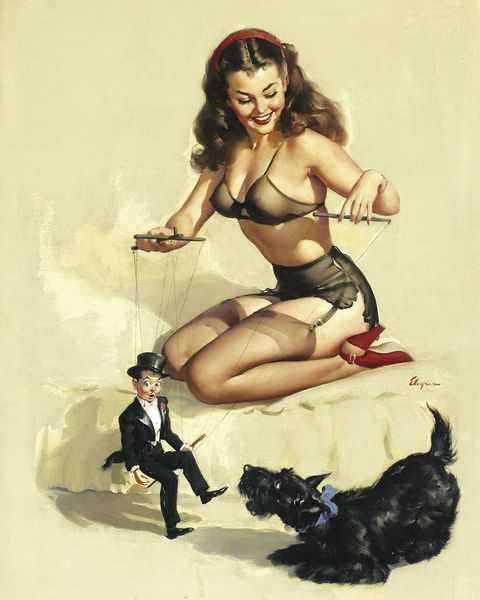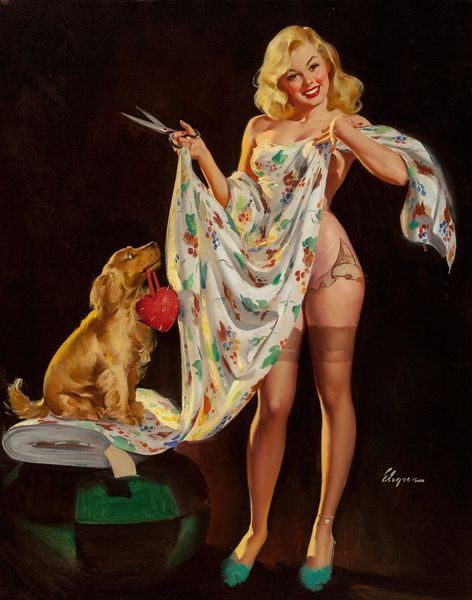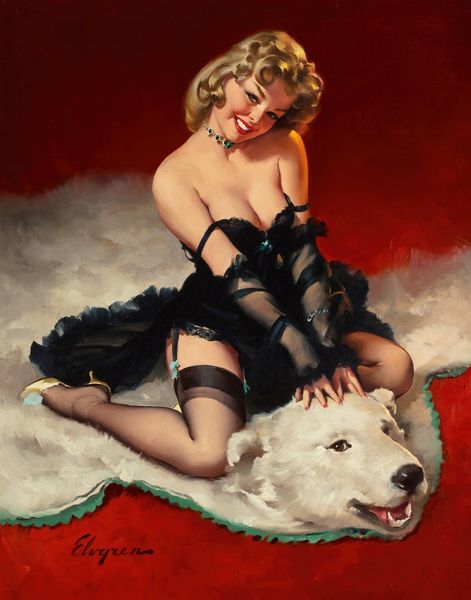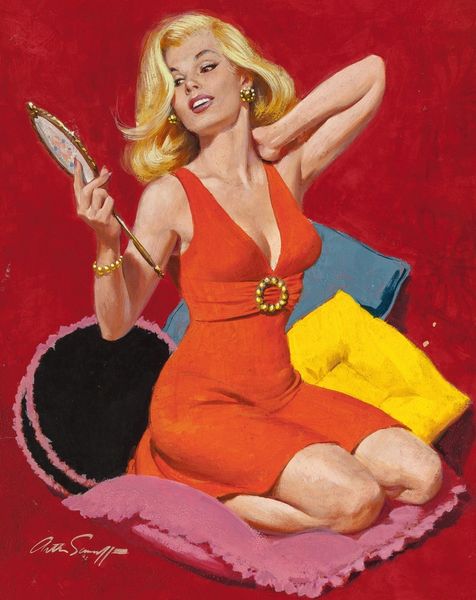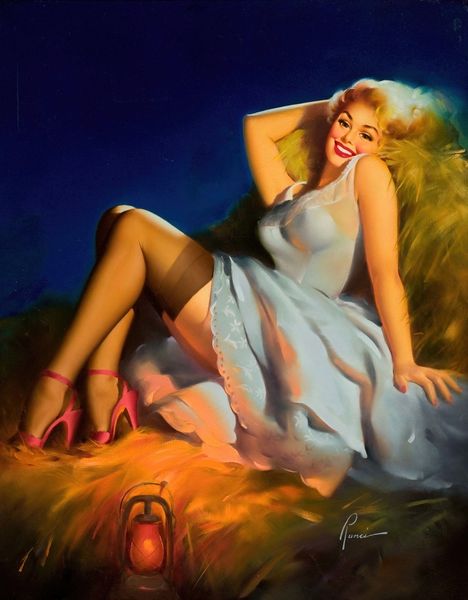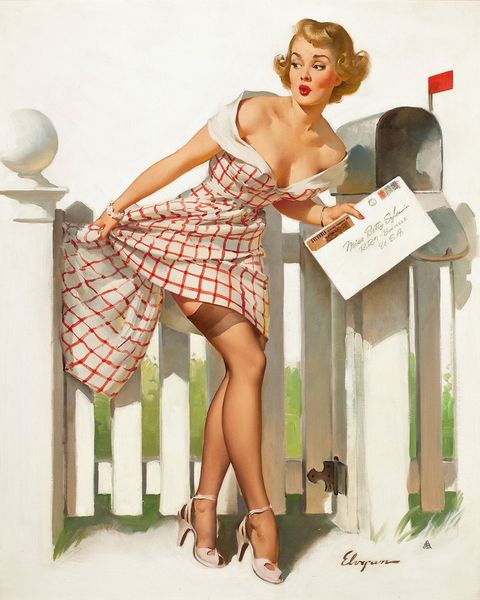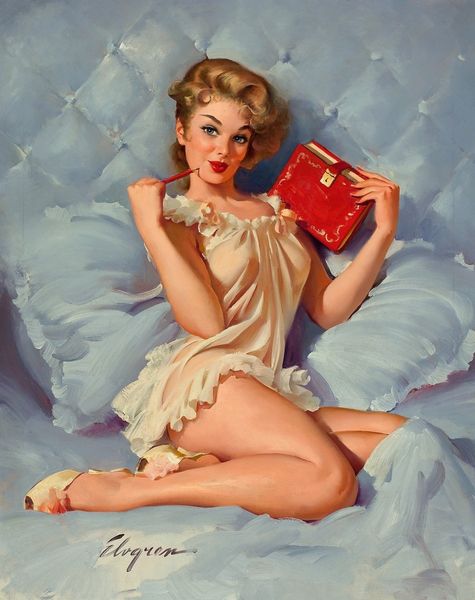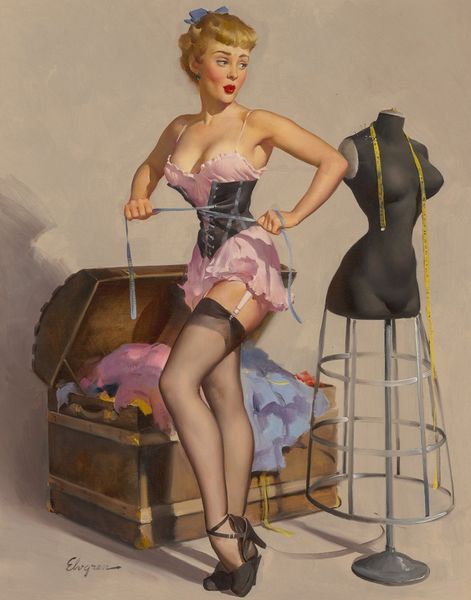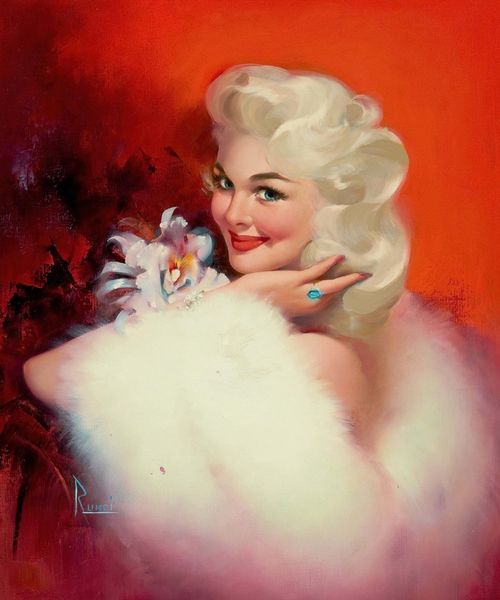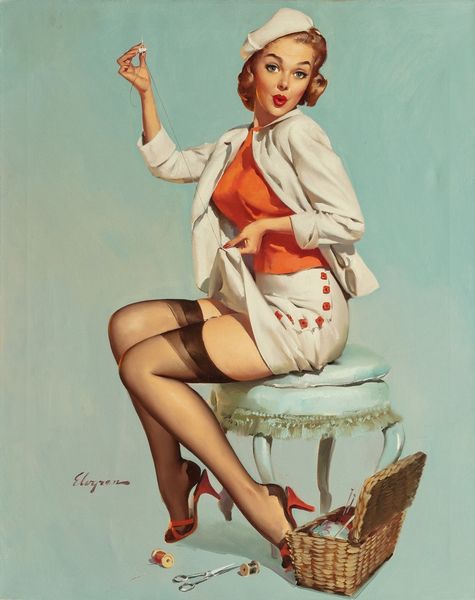
#
portrait reference
#
portrait head and shoulder
#
teen art
#
animal drawing portrait
#
portrait drawing
#
facial portrait
#
portrait art
#
fine art portrait
#
celebrity portrait
#
digital portrait
Copyright: Modern Artists: Artvee
Editor: Gil Elvgren's 1958 piece, "Lucky Dog," features a pin-up style woman holding a small dog in a playful pose. It's bright and cheery, but there's almost an uncomfortable tension with its obvious display of exaggerated sexuality. What's your take on this sort of imagery? Curator: The overt display, as you put it, is precisely what makes this sort of work a lightning rod for discussions around gender and the male gaze in art history. In the mid-20th century, pin-up art occupied a strange space – it was commercially viable, appearing in calendars and magazines, but often dismissed as frivolous or even detrimental to societal values, can you see why? Editor: Because it objectifies women? This feels like reinforcing stereotypes rather than empowering them. But then where do you draw the line? Curator: Exactly, you're hitting on a crucial point. What is art's responsibility, if any, to portray 'correct' or 'moral' representations? Consider who consumed these images and why. Were they *all* being consumed from a male gaze? How do marketing strategies and the institutional spaces of display reinforce these readings, or potentially challenge them? For instance, how does the framing of this image in a gallery context change its meaning? Editor: I see. If it's placed within a historical context, like, say, an exhibit exploring gender representation in advertising, that context might shift our perception. Rather than simply being titillating, it becomes an object *for* analysis. Curator: Precisely. By examining how institutions present this kind of work, we start to understand the power dynamics at play. This sort of visual language was common in the 50's. The point of this art then is not to passively consume the image but rather, how these images reflect, influence, and shape broader socio-cultural norms around sexuality. Editor: So, it’s about looking *beyond* the initial impression to see what the image says about society at large, and the roles of different power structures in constructing that message? Fascinating! I’ll never look at pin-up art the same way again.
Comments
No comments
Be the first to comment and join the conversation on the ultimate creative platform.
